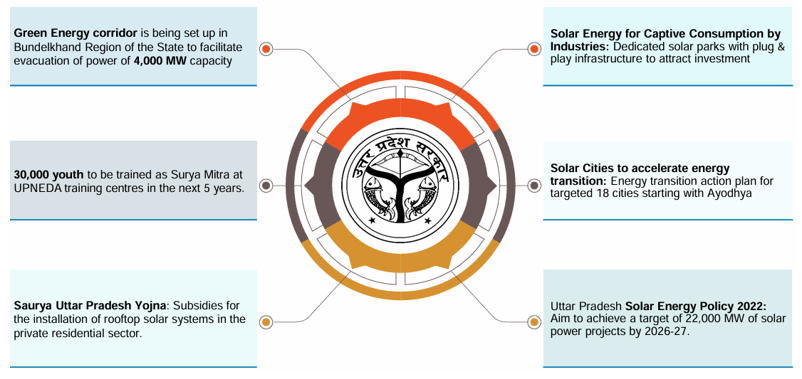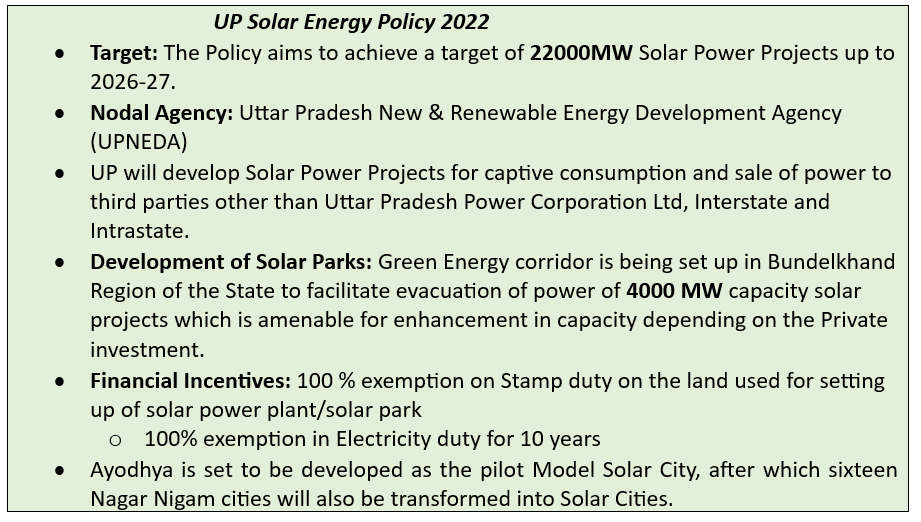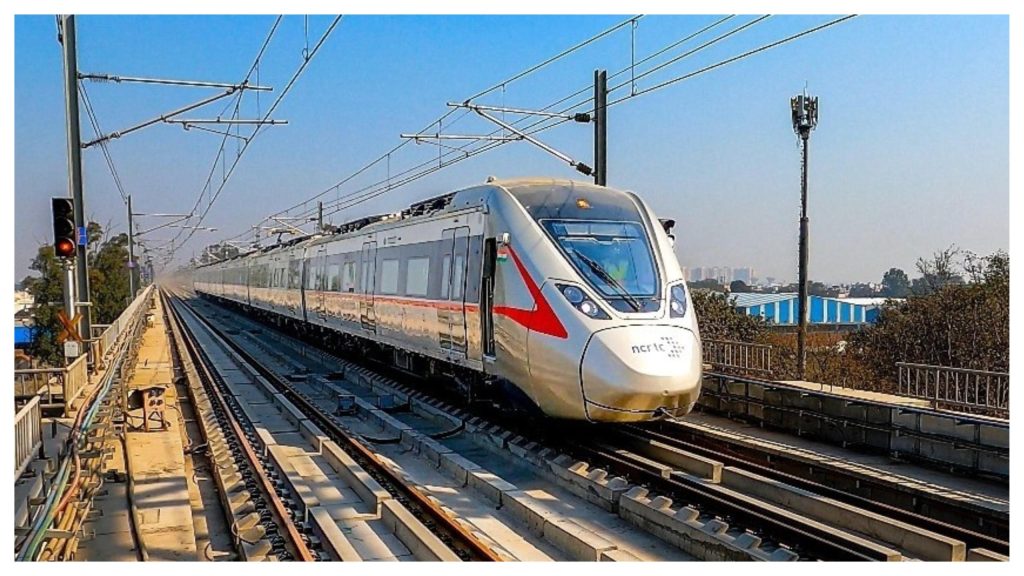Recent Context:
Recently, the National Capital Region Transport Corporation (NCRTC) has implemented a pioneering ‘Solar on Track’ system at the Namo Bharat Depot in Duhai, Ghaziabad, marking the first such initiative in any RRTS or Metro network in India.
- All electricity related work except train operation will be done through solar panels.
More on the news:
- Solar Panel installation: Solar panels have been installed on a 70 metre stretch of the Pit Wheel Track.
- The installation includes 28 solar panels, each with a capacity of 550 Wp(Watt peak), resulting in a total plant capacity of 15.4kWp.
- Energy Generation: The system is expected to generate approximately 17,500 kWh of electricity annually.
- Environmental Benefits: This project will help reduce carbon dioxide emissions by an estimated 16 tonnes per year.
- By harnessing solar energy directly from the tracks, NCRTC is not only maximizing space utilization but also reinforcing its mission to achieve net-zero energy consumption across its facilities.
- Other Initiatives at Namo Bharat Corridor: Along with the installation of solar power plants, provisions have also been made for rainwater harvesting systems and sewage treatment plants along the Namo Bharat Corridor.
- Alignment with NCRTC’s Solar Policy: The ‘Solar on Track’ project is part of NCRTC’s broader solar policy, which aims to meet 70% of its energy requirements through renewable sources.
- 5.5 MW of rooftop solar capacity is operational across various stations, depots, and buildings, with a target of 15 MW peak inhouse generation.
Solar Power Generation in UP
- Solar Energy in Bundelkhand: Three solar power projects with a combined capacity of 2,000 MW and an investment of around ₹10,000 crore are planned for Jhansi, Lalitpur, and Chitrakoot districts in Bundelkhand.
- These projects are expected to become operational by December 2025.
- Floating Solar Project: The UP government is also planning to set up floating solar plants across reservoirs in partnership with NTPC, Tehri Hydro Development Corporation, and Satluj Jal Vidyut Nigam.

- Installed Capacity: As of August 2024, a total of 3,871.17 MW of grid-connected renewable capacity has been installed in the state.
- An additional 2,594 MW generated from ground-mounted projects for captive use, third-party sales, and open sales to DISCOM and UPPCL.
- Furthermore, rooftop solar systems with a capacity of 375 MW have been installed in homes across the state.
- Installed Capacity: As of August 2024, a total of 3,871.17 MW of grid-connected renewable capacity has been installed in the state.
- An additional 2,594 MW generated from ground-mounted projects for captive use, third-party sales, and open sales to DISCOM and UPPCL.
- Furthermore, rooftop solar systems with a capacity of 375 MW have been installed in homes across the state.


